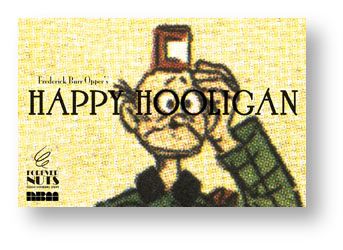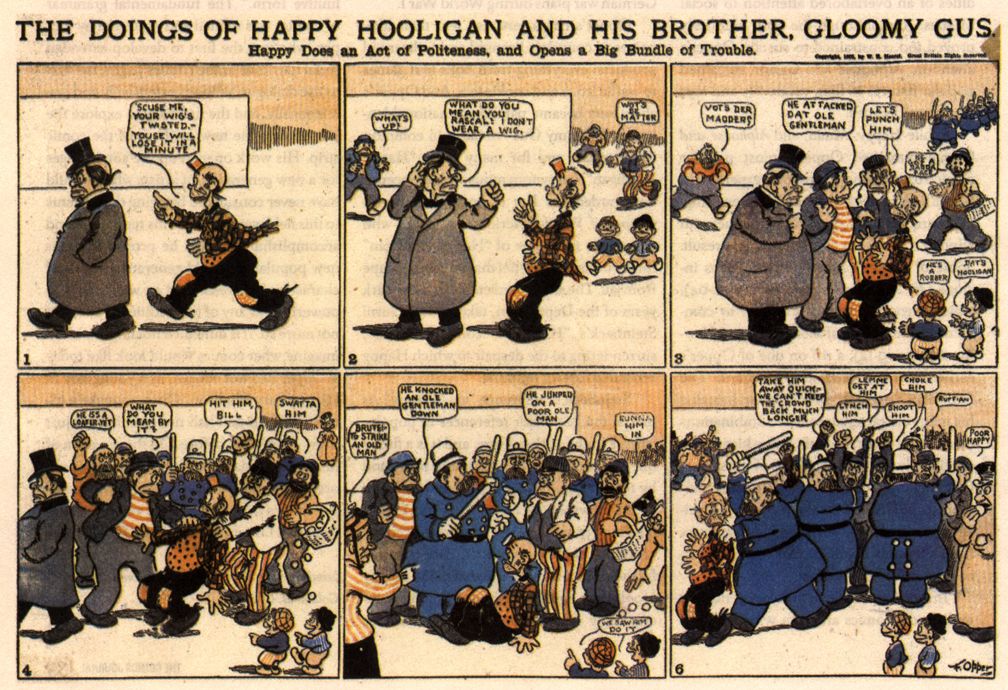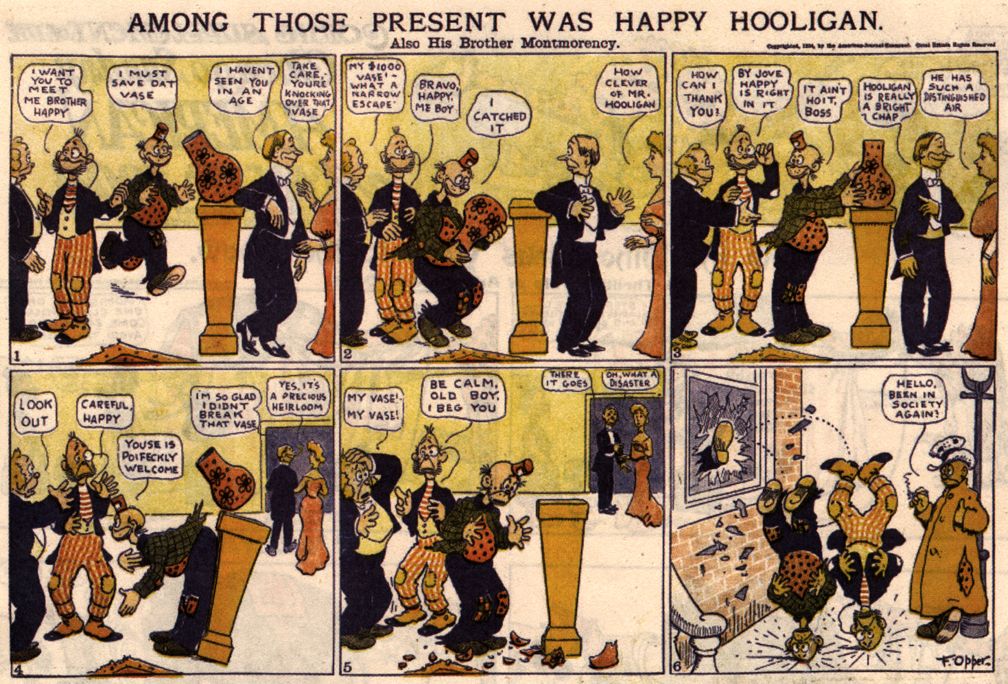NBM Publishing recently began a great series of reprints of classic screwball comic strips under the banner "Forever Nuts." The first one was Mutt & Jeff and now they follow with Frederick Budd Opper's early 20th Century classic, Happy Hooligan, in a collection that works wonderfully as a piece of comic book history.
Now, as an actual comic, that's a whole other story.
These early 20th Century works really have to be read in the context that they originally appeared. Quite a few of the strips hold up remarkably well, like E. C. Segar's Thimble Theater, but in the case of Happy Hooligan, the format really has an influence upon the style of story that Opper tells here.
This was a time where comics were truly treated like a "done in one" to the absolute extremes of that idea, so that the first month or so of Happy Hooligan Sunday strips consist of basically the same exact strip.
Happy, a good natured buffoon, will see someone in trouble (or in need of some sort of help) and in the process of helping them, he will screw up and either make things work or somehow get into trouble with the police. At the end of the strip, he'll be taken away by the police while Happy's cynical brother, Gloomy Gus, will usually reap some benefit.
For instance, Happy is sititng on a diving board and Gus is floating in the water when a man with a picnic basket runs on to the diving board after his hat, which has blown into the water. Happy, of course, dives in to get the hat, but in doing so, moves the diving board in such a way that the man is thrown into the water. The police arrive to arrest Happy, while Gus chomps away at the man's picnic basket, which landed directly on his chest.
That same basic gag repeats itself over and over and over again, with very little variations, to the point where when there ARE variations, they leap out at you.
Here are two sample pages (click to enlarge)...
Do note that Opper was an excellent draftsman, and his storytelling abilities were far beyond most other comic strips of the turn of the century. In fact, I believe Opper was the first artist to use word balloons exclusively to deliver his stories.
The characters Opper created are strong one, especially Happy's two brothers, Montgomery (who wants to be part of high society) and Gus (the cynical one who often takes advantage of his hapless brother), plus Happy's young nephews - three identical boys who are almost CERTAINLY the influence for Huey, Dewey and Louie.
That's really where these strips shine the most - in the influence they clearly had on basically every slapstick comic strip or cartoon to follow. Without a Happy Hooligan, we likely don't get a Wile E. Coyote, for instance.
So this book has great historical importance and the hardcover reproduces the strips beautifully, making them look as good as (heck, maybe BETTER THAN) they looked when they were first published, over a hundred years ago in the case of the earliest strips! It is handsome collection, so from that standpoint, I heartily recommend this collection.
Just strictly on the stories collected, though, I don't know if they hold up that well nowadays, so I probably would not recommend it in that sense.
So it really comes down to how you look at things like this - do you appreciate the history and influences of comics or not?
Here is the site for NBM's collection of Happy Hooligan (there's another sample to be read there).



